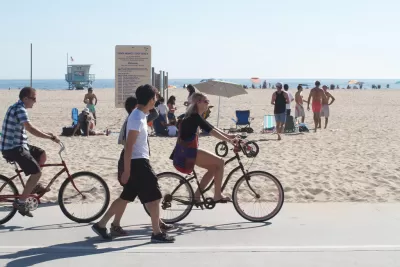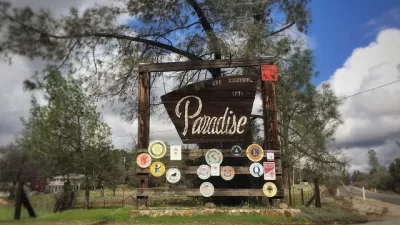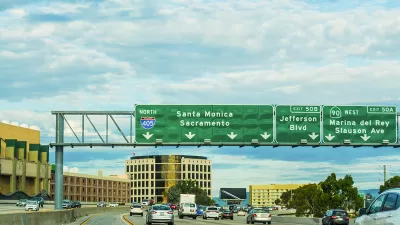Rather than projecting when the 50 million milestone will be reached, demographic and political indicators predict the state's population is more likely to decline, according to Joe Mathews of Zócalo Public Square.

Upon crossing the 40 million threshold, expect "another round of boasting about our size, not merely in population but in economic output and cultural impact, opines The moment will also produce new predictions about how soon we’ll get to 50 million or even 100 million people." [Listen to interview on KCRW].
But such projections are dubious. Instead, California should consider the real possibility that our era of population growth is nearly over — and that shrinkage could be our future.
California’s population growth is already at record lows — less than 0.8 percent annually — and falling. During the heyday of immigration, in the 1980s, annual population growth was 2.5 percent a year. Indeed, with many other states growing faster than the Golden State, in 2022 California could lose a seat in the House of Representatives for the first time.
Other states are growing at rates that California experienced many decades ago. Idaho grew by 2.2 percent from July 2016 to July 2017; Utah by 2 percent, the fastest in the prior year.
"Trends that have produced population decline in other places are now strong in California," warns Mathews.
Our birth rate has fallen to its lowest rate ever. We’re losing more people to other states each year than come back to us. And international immigration remains low — and could fall further given the federal government’s harassment and mass deportation of immigrants.
For a glimpse into the Golden State's potential demographic future, consider the path taken by the Empire State, the nation's most populous until California topped it in 1964. In 2014, the Sunshine State knocked New York from third to fourth most populous.
According to Dan Clark of PolitiFact on Sept. 29, 2017, "New York lost a net 846,669 people to other states between 2011 and 2016, more than any other state. Illinois recorded the second-highest outmigration in the country with a net loss of 540,166 residents."
Mathews is concerned by what he observes in Sacramento. "Our state’s own policies — especially underinvestment in schools, infrastructure and housing — all discourage family creation and add to the high cost of living that drives people out of California," he writes.
However, most blame for the number one driver of out-migration, high housing costs, lies with local governments, not Sacramento. According to a January study by UC Berkeley and Columbia University, local land use processes, specifically the approval process, is the main impediment to housing production in California.
State legislators could have addressed this problem by approving a controversial bill, SB 827, Transit-Rich Housing Bonus. The bill died in its first committee hearing in April.
While some in the environmental community may be pleased with the notion of population decline, Mathews tells Santa Monica NPR affiliate, KCRW, in the July 19 edition of Zócalo's Connecting California, "that it bodes poorly for the future of the nation's most populous state."
Mathews argues that we need a growing population, especially of young people, to maintain our status as an innovative force in the international economy.
He ends his column by urging policymakers to "think more seriously about how to attract more people here from other states and countries, and better nurture and retain the young people we have here now."
FULL STORY: Could California’s Population Actually Shrink?

Planetizen Federal Action Tracker
A weekly monitor of how Trump’s orders and actions are impacting planners and planning in America.

Congressman Proposes Bill to Rename DC Metro “Trump Train”
The Make Autorail Great Again Act would withhold federal funding to the system until the Washington Metropolitan Area Transit Authority (WMATA), rebrands as the Washington Metropolitan Authority for Greater Access (WMAGA).

The Simple Legislative Tool Transforming Vacant Downtowns
In California, Michigan and Georgia, an easy win is bringing dollars — and delight — back to city centers.

The States Losing Rural Delivery Rooms at an Alarming Pace
In some states, as few as 9% of rural hospitals still deliver babies. As a result, rising pre-term births, no adequate pre-term care and harrowing close calls are a growing reality.

The Small South Asian Republic Going all in on EVs
Thanks to one simple policy change less than five years ago, 65% of new cars in this Himalayan country are now electric.

DC Backpedals on Bike Lane Protection, Swaps Barriers for Paint
Citing aesthetic concerns, the city is removing the concrete barriers and flexposts that once separated Arizona Avenue cyclists from motor vehicles.
Urban Design for Planners 1: Software Tools
This six-course series explores essential urban design concepts using open source software and equips planners with the tools they need to participate fully in the urban design process.
Planning for Universal Design
Learn the tools for implementing Universal Design in planning regulations.
Smith Gee Studio
City of Charlotte
City of Camden Redevelopment Agency
City of Astoria
Transportation Research & Education Center (TREC) at Portland State University
US High Speed Rail Association
City of Camden Redevelopment Agency
Municipality of Princeton (NJ)





























